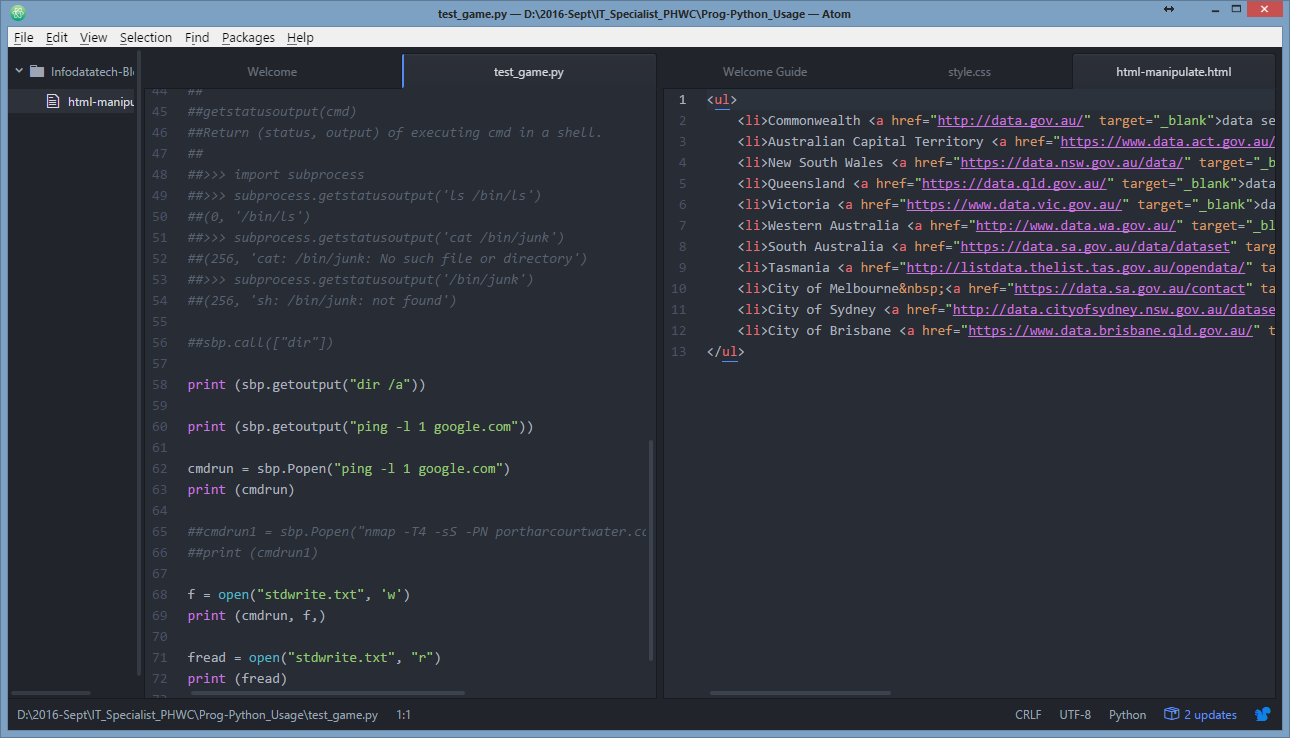A Programmer's Tool - Learn About Code Editor.
Code Editor.

What is a Code Editors?
Source Code Editor versus Text Editor
Source code editor - enhances, automates and eases the production and editing of source code, it's a more advanced text editor.
Text editor - are a type of program used for editing plain text files, it provides the very basic functionality for making changes to Config files. Some of the basic features of a text editor may
include; Find and replace, Cut, copy, and paste, Text formatting, Undo and redo, Data transformation, Filtering, Syntax highlighting, Extensibility
Tools to help you code more efficiently
Listed below are some of the best source code editors available to programmers. Some may have steep learning curves over others, but before choosing make sure you understand the features to look of for in a great code editor (scroll down)
- Notepad++
- Atom
- Vim
- Light Table
- Bluefish
- Sublime
- Vim
- Emacs
- Visual Studio Code
Notepad + +
Features to look out for in a great code editor
This source code editor features help you work more efficiently while writing code or developing a web application, by enhancing, automating or ease the editing of code.
Syntax highlighting for multiple programming and scripting languages
Autocompletion
Auto Indentation
Code folding
Text folding
Function list
Brace matching
Support for other programming features - Text shell integration, Graphical shell integration, Macro language, Collaborative editing, Large file support, Long line support, Multi-line regex support, Search in files.
Playback and Recordable macros (keyboard or mouse strokes, cache your progress automatically so nothing is lost if you accidentally close the program) to help you code more efficiently
History support for calling up commonly used snippets of code
Built-in script for automation and customization
Flexible customization options and plugins
-
Syntax highlight, checking, validation and error notifications
Code compression - converting common keywords into single-byte tokens, removing unnecessary whitespace, and converting numbers to a binary form
Code uncompression - for viewing, pretty printing, formatting or beautifying code
-
Support for common document interfaces (i.e. Multiple instances, Single document interface, Single document window splitting, multiple document interface )
MDI(multiple document interface): overlapped windows, tabbed document interface, window splitting)
Support for basic editing features - Spell checking, Regex-based find & replace, Encoding conversion, Newline conversion, Multiple undo/redo, Rectangular block selection
Support for key bindings - a keyboard shortcut and may be customizable to a user's preference and that program functions may be 'bound' to a different set of keystrokes instead of or in addition to the default
Support for remote file editing over network protocols (FTP, HTTP, SSH, WebDAV)
Support for some of the most common character encodings (ASCII, ISO-8859,DOS (OEM), EBCDIC,UTF-8, UTF-16)
Availability of built-in package managers, used to search for expansion options from within the program, without the need to fire up your web browser.
Instant previews of code with availability of the embedded web browser (i.e Light Table)
Atom

Visual Studio Code Editor
Other Editors
Hex Editors - used for editing binary files. Its also known as binary file editor or byte editor. allows for manipulation of the fundamental binary data that constitutes a computer file The name 'hex' comes from 'hexadecimal': a standard numerical format for representing binary data.
Comparison of hex editors
Stream Editor – used for non-interactive editing
Related Readup










